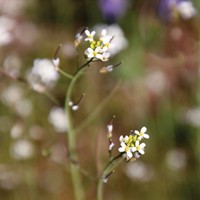Advertisement
Grab your lab coat. Let's get started
Welcome!
Welcome!
Create an account below to get 6 C&EN articles per month, receive newsletters and more - all free.
It seems this is your first time logging in online. Please enter the following information to continue.
As an ACS member you automatically get access to this site. All we need is few more details to create your reading experience.
Not you? Sign in with a different account.
Not you? Sign in with a different account.
ERROR 1
ERROR 1
ERROR 2
ERROR 2
ERROR 2
ERROR 2
ERROR 2
Password and Confirm password must match.
If you have an ACS member number, please enter it here so we can link this account to your membership. (optional)
ERROR 2
ACS values your privacy. By submitting your information, you are gaining access to C&EN and subscribing to our weekly newsletter. We use the information you provide to make your reading experience better, and we will never sell your data to third party members.
Natural Products
Plant used in traditional Chinese medicine is a source of natural insecticides
Symbiotic bacteria living in plant stems produce compounds that kill aphids
by Lakshmi Supriya, special to C&EN
February 17, 2020

The herb Stemona sessilifolia has long been used in traditional Chinese medicine to combat parasitic worm infections in people and to kill insects on plants. That insecticidal activity has now been traced back to symbiotic bacteria living in the plant (J. Agric. Food Chem. 2020, DOI: 10.1021/acs.jafc.9b06755). The discovery may help to develop insecticides and agricultural chemicals that are derived from biological sources, which could be less harmful to the environment and to humans than many agrochemicals used today.
Organisms like bacteria and fungi that live inside plants are called endophytes. Some protect the plant from pathogens or stressors like drought, while others help the plants obtain nutrients. These microbes can also produce a range of useful compounds: previous studies have isolated insecticidal molecules from neem tree endophytes and anticancer compounds from fungi found in Pacific yew.
Since S. sessilifolia has been used as an insecticide for hundreds of years, Xiachang Wang and Lihong Hu of Nanjing University of Chinese Medicine and their colleagues wondered if the symbiotic microbes in the plant could produce insecticidal natural products.
The team isolated a Streptomyces bacterium from within the plant stems and used DNA sequencing to identify it as S. clavuligerus. Next, they grew the bacterium in liquid culture and extracted and purified the organics produced. The team isolated 10 new compounds that were pyrrole derivatives; pyrroles are a class of compounds well known for insecticidal activity.
The researchers tested the efficacy of these compounds as insecticides against aphids (Aphis gossypii) and spider mites (Tetranychus urticae). They dipped leaves with the pests on them in solutions of the 10 individual compounds, as well as a mixture of the organic extracts. Then they removed and dried the leaves and counted how many insects were alive after a few days.
The crude extract showed the best insecticidal activity for the aphids, killing almost all of them and performing nearly as well as a commercial insecticide. The individual compounds killed only about 80% of the aphids. Neither the individual compounds nor the mixture was very effective against the spider mite, killing only 50 to 80% of them.
“The discovery of this insecticide-producing endophytic Streptomyces strain has implications for further research both within the biochemical and agricultural contexts,” says Souvik Kusari of the Technical University of Dortmund, who studies plant endophytes and was not associated with the study. “Over the longer term, I foresee a high potential of endophytes in crop protection” replacing harmful chemical pesticides with these types of biologically produced compounds, he says.
Wang also sees them as potentially safe products for pest control. However, the compounds still need to be tested for human toxicity and for their effectiveness against more pests.





Join the conversation
Contact the reporter
Submit a Letter to the Editor for publication
Engage with us on Twitter